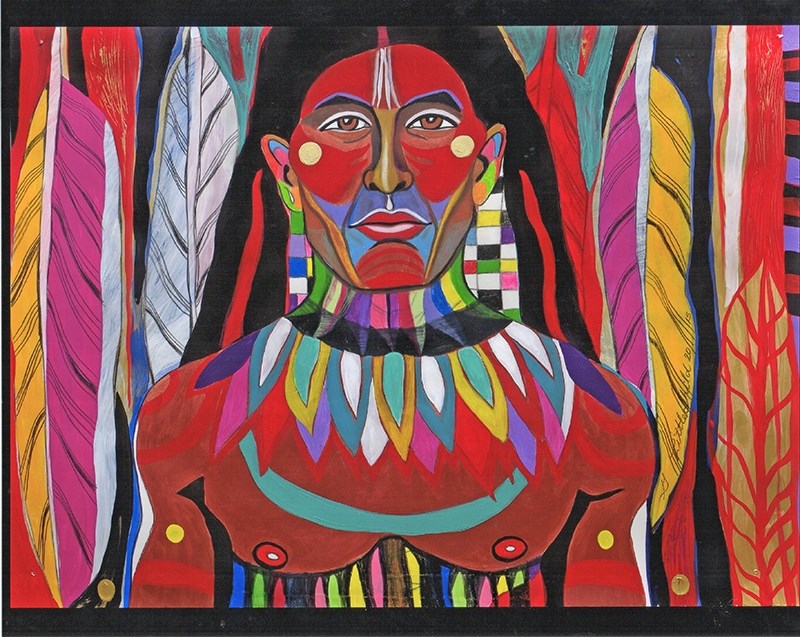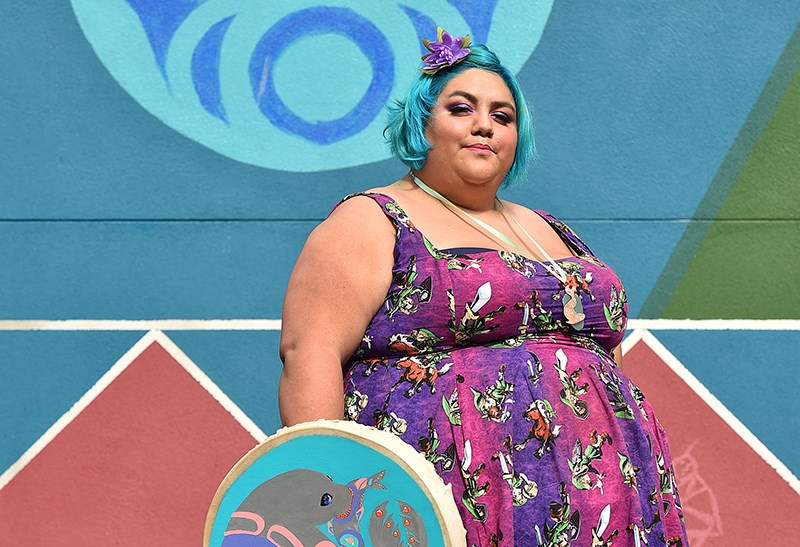Art is a vital form of communication. That’s what multidisciplinary artist Raven John holds to be true in the works she creates, be it buttons, pendants, films or paintings.
“It can be really difficult for people to communicate with words, considering language barriers, but also education and class barriers,” says John, whose work plays a central role at this year’s Queer Arts Festival.
That is, essentially, the message that drove John – a member of the Chawathil and Sechelt First Nations,who identifies as gender-fluid – to create demonstration buttons following last January’s attack on a Quebec mosque that left six dead and injured another five.
John had been at an anti-Nazi rally earlier that day when news broke about the bombings. Disheartened by the growing sense of fragmentation in her city, country, and world, she went home and made the pins using materials she had on hand.
The following day, John arrived at a rally with 50 or so custom-made buttons at the ready, with sayings like Love not Hate and Black Lives Matter emblazoned on the front,and others with a strike through the words White supremacy.
By the end of the day, she had only 12 remaining.
“I wanted to show my support,” she says. “For the families, and just try to make it known that we live in a city that’s not going to support that kind of [act].”
To move forward and heal from such violence, though, it’s often also necessary to look back. It’s the power of the arts in this reflective capacity that drew the organizers and artistic directors of the Queer Arts Festival this year to select a theme that revolved around the culture and identity of indigenous people – the people who occupied the land here before it came to be known as Canada.

“We need to look back at the people who have been really good caretakers of the planet,” says QAF director SD Holman of the motivations to base this year’s theme, UnSettled, on what the event website describes as “the issues of historical extermination of two-spirit people, the lack of alternative aboriginal sexuality and gender in contemporary Western culture/media.” (The term two-spirit refers to an identity in indigenous cultures that embodies attributes of both the male and female spirit.)
While many organizations are starting to put on events to celebrate Canada’s 150th year of confederation, Holman and her team decided to take a more pressing position.
“My team actually said ‘ew, what about the 500 years of colonization?’ So that’s what we wanted to look at – really making an effort to make inroads with respect and honour the people whose land this is,” Holman says.
In addition to the event’s signature visual art show – curated this year by educator and two-spirit Blackfoot artist Adrian Stimson – the festival also includes musician Cris Derksen with the Chippewa Travellers, Allegra Chamber Orchestra and hoop dancer Nimkii Osawamick; poetry and electronic music by Kinnie Starr, DJ O Show and Tiffany Moses, alongside artists from QAF’s young artist program; indigenous erotica; as well as contemporary dance by the Circadia Indigena arts collective and lemonTree creations’ dance-theatre work, MSM [men seeking men], to name a few.
At the visual art show, John, a recent graduate of Emily Carr University, will be debuting a new work she calls the “two-spirit transformation blessing.” She describes the work as a portrait of a ‘raven spirit’ raising its arms in acknowledgment and appreciation of the spirit.
Meanwhile, as curator, Stimson has brought together a dynamic group of indigenous artists, including George Littlechild, John Powell, Dayna Danger and Vanessa Dion Fletcher, who look to explore the two-spirit identity. In other words, art that examines gender, spirit and sexual orientation beyond the binaries of black and white, male or female.
And while the theme changes annually, there is one component to the festival that remains a constant.
“Art changes people,” says Holman, “and people change the world.”
The Queer Arts Festival runs June 17-29 at the Roundhouse and various locations. For tickets and more information, visit queerartsfestival.com.


